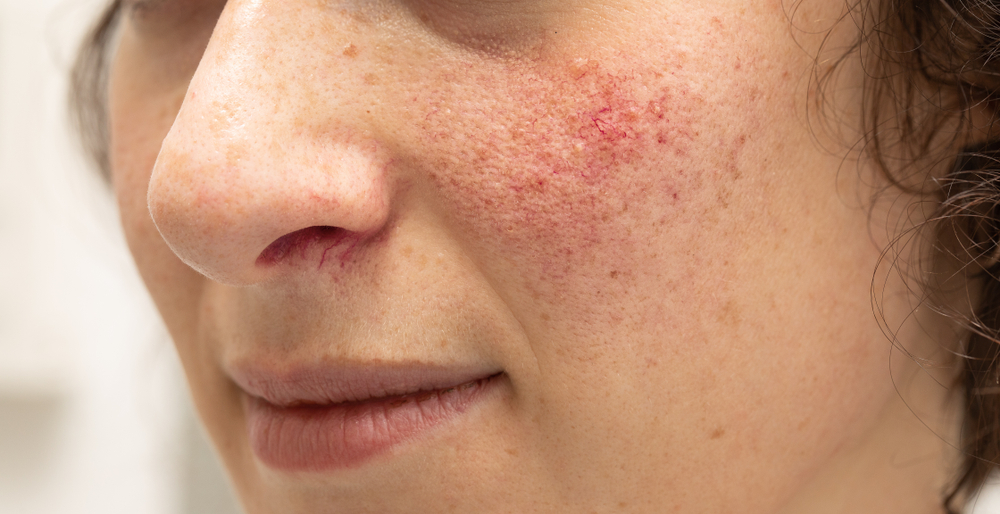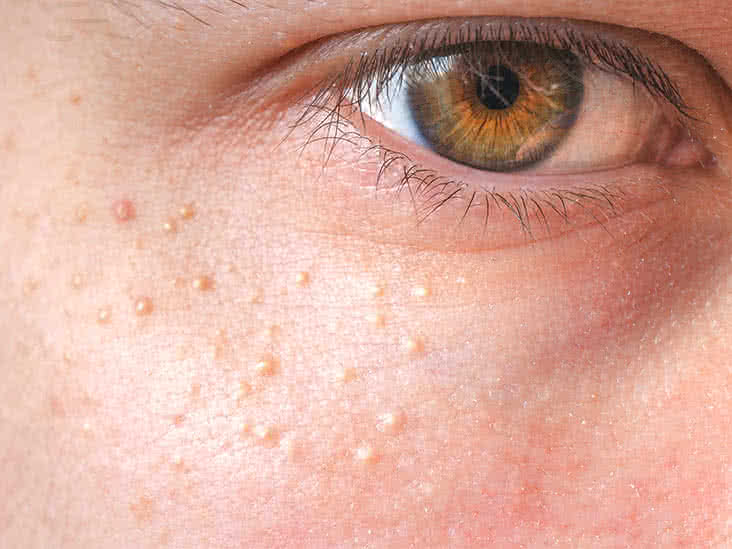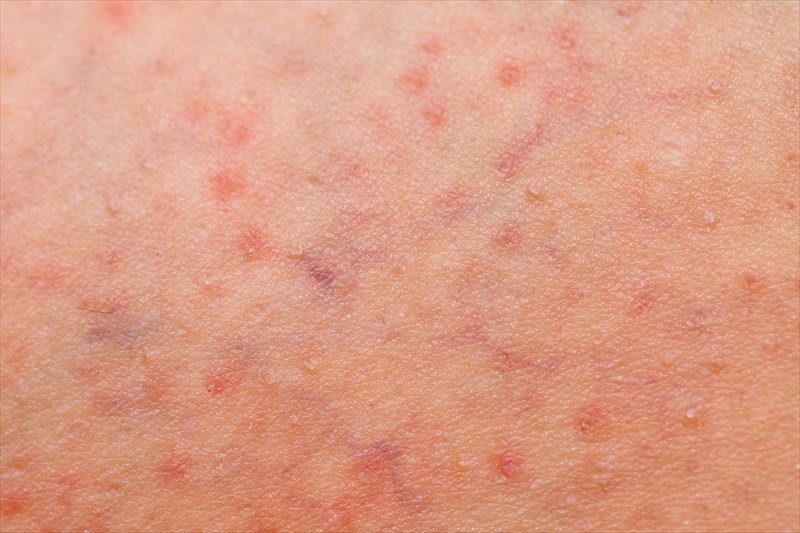
You get these red bumps on your face but acne medications just doesn’t seem to work. It’s time to consider other possibilities that may be masquerading as acne.
ROSACEA

What is it: Rosacea is a condition involving the blood vessels in the face. Persistent redness across the cheeks and nose is a common symptom of rosacea, and as the condition progresses, clusters of blood vessels and swollen red bumps may give the face a pebbly appearance
How to tell it apart from acne: Although both acne and rosacea can manifest as redness and skin bumps, the two conditions have some differences: Acne typically affects teenagers and young adults, while rosacea tends to appear in patients older than 30. Rosacea usually begins with flushing, leading to persistent redness, followed by the development of red bumps. This generally restricted to the nose, cheeks, chin and forehead. Acne sufferers normally do not have the accompanying flushing or redness. Acne usually manifests as pore blockages called blackheads and pus-filled pimples called whiteheads. Rosacea appears mostly as surface redness and red bumps without “heads”.
How to treat it: Some rosacea sufferers can have an acne component in their symptoms as well so it can be easily confused with acne. Fortunately, both being inflammatory conditions, the treatment for rosacea and acne can be somewhat similar. (The caveat is that some more aggressive acne treatment regimens can be too harsh for rosacea affected skin and can instead aggravate the condition.)
Keep Rosacea under control with: Topical antibiotic creams or long term low dose oral antibiotics Topical agents like azelaic acid and retinoids can also be used to reduce surface inflammation. Vbeam laser is a pulsed dye laser that targets both the visible blood vessels of rosacea as well as the tiny dilated blood vessels that cause the redness and flushing associated with rosacea. Vbeam can also reduce the inflammation commonly seen with rosacea responsible for bumps, swelling, pimples and can significantly improve skin texture. Most patients will see improvement without bruising after 2-4 treatments. More severe rosacea may require more treatments or may require more aggressive settings that cause a mild bit of bruising.
MILIA SEEDS

What is it: Milia or oil seeds as they otherwise commonly known, appear as small hard whitish bumps on the face. They are usually seen on the forehead, around the eyes, cheeks and chin. They are formed when dead skin does not slough off normally but instead remains trapped in a tiny round pocket under the surface of the skin
How to tell it apart from acne: Milia seeds may look very similar to whiteheads, although they tend to feel harder and never get inflamed and become red. Even though you should never pop or squeeze anything on your face, picking at milia will get you nowhere. They barely budge and most of the time nothing comes out with just your fingers
How to treat it: Regular exfoliation can prevent them from forming. “Best to have them professionally removed with your doctor using light Electrocautery to deroof the lesion allowing the skin to expel the colloidal material” advises Dr Chua Han Boon who sees at least such ten cases per week.
FOLLICULITIS

What is it: Folliculitis is an infection of the hair follicles (acne is an disorder of the oil gland), and usually appears as small, white-headed pimples around one or more hair follicles. Most cases are due to an infection with a bacterium called Staphylococcus aureus, but can also be caused by fungi and viruses.
How to tell it apart from acne: It looks just like acne and can easily be confused for it. With severe cases, it can cause hair loss and scarring as well. Some differences include: “Folliculitis is much more common in men but can also affect women” says Dr Low Chai Ling from SW1 Clinic. “The most common site affected is the beard area of men. Other common sites for folliculitis are the arms, legs, and armpits”. Folliculitis often occur in crops, usually at sites where hair follicles are damaged by friction or shaving, or where there is blockage of the follicle.
How to treat it: Home therapy for mild cases of bacterial folliculitis includes use of an over-the-counter antibacterial wash with benzoyl peroxide. Consult with your doctor or more persistent or severe cases. After examining you he may choose to start you on a topical antibiotic, topical antifungal or oral medications. Laser hair removal is an effective solution for chronic or severe cases if you are comfortable to permanently remove hair over that area that you are affected

Thanks so much! I had no idea that there were so many types of pimples/acne. Yikes! could you please recommend any specialists in Singapore? Thanks again~ =D
I’ve suffered from rosacea for many years but i was often diagnosed as having pimples or simply sensitive skin. However i found drastic improvements in vbeam laser for my condition, so i reckoned a proper diagnosis is vital to positive changes in your condition